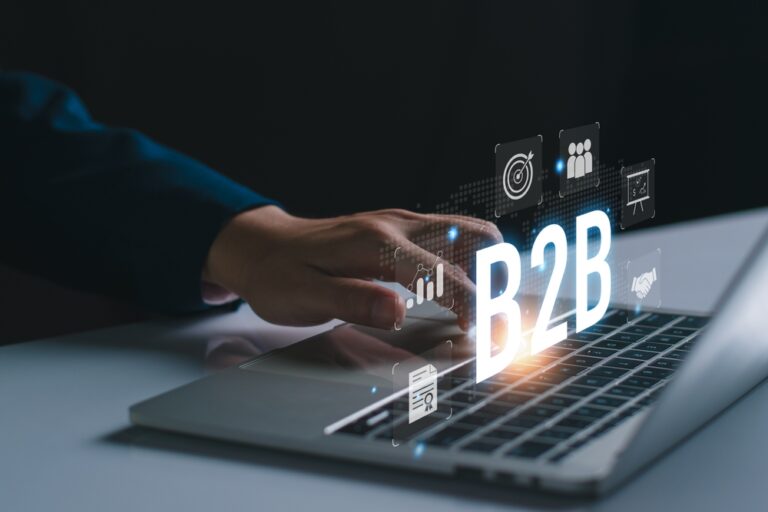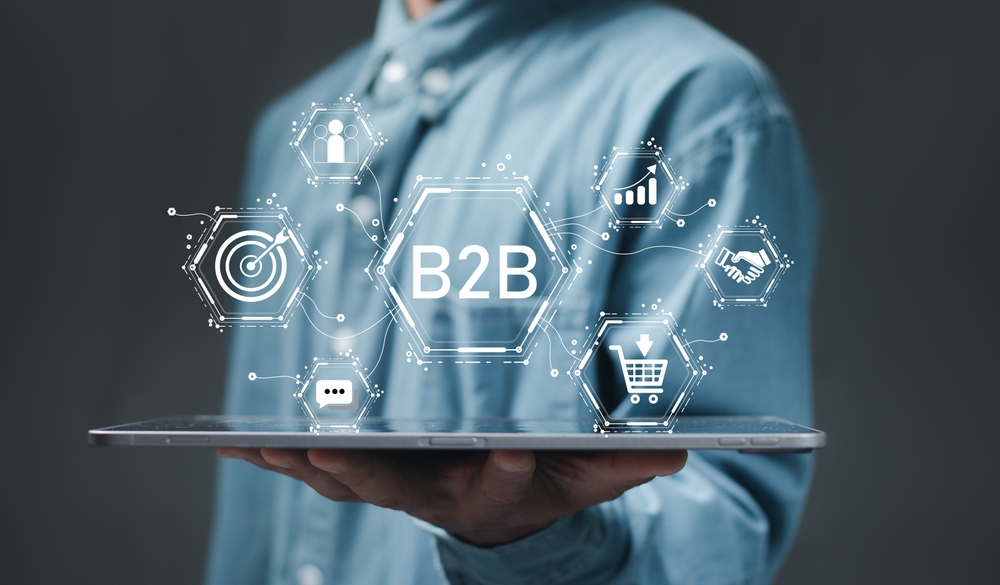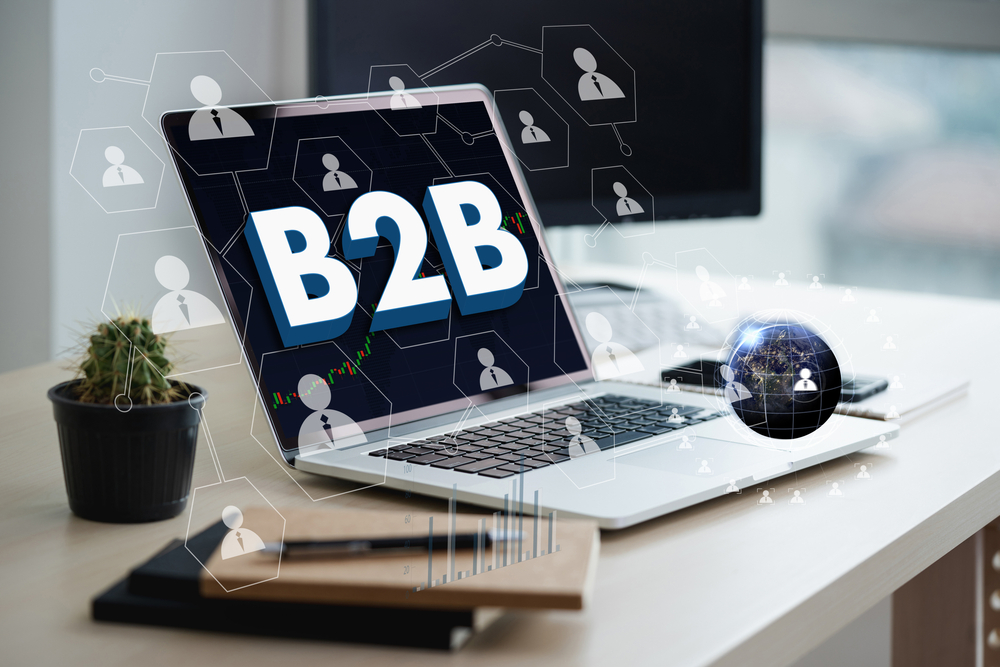B2B as B2C
In the world of business-to-business (B2B) ecommerce, there’s much to be enthusiastic about. This channel offers a scalable and cost-effective means to enhance profitability and elevate your brand’s visibility. With B2B ecommerce experiencing rapid growth in recent years, forecasts indicate this upward trend will persist well into the 2030s.
It’s no wonder that many business-to-consumer (B2C) companies are eager to explore the opportunities within B2B ecommerce. For numerous organizations, this transition can be both promising and lucrative. However, ecommerce leaders must recognize that simply adopting B2C strategies for B2B contexts won’t guarantee success.
The B2B customer journey is inherently different from the B2C experience. While B2C businesses cater to a broad consumer audience, B2B firms focus on a more niche, industry-specific clientele. Additionally, the B2B purchasing process tends to be longer and more intricate, often involving multiple decision-makers rather than a single consumer making a quick choice on their mobile device.

The Evolution of B2B Customer Journeys in 2024
In 2024, B2B customer journeys are becoming increasingly intricate, reflecting a shift in expectations as business users seek experiences comparable to those offered by B2C brands. This change is primarily driven by millennials, who now constitute the majority of B2B decision-makers, according to research from The B2B Institute and LinkedIn.
As digital natives, millennials are accustomed to cloud-based software and collaborative tools, which have significantly shaped their expectations for B2B products and services. They demand streamlined self-service transactions, allowing them to choose a plan, complete payment, set up an account, and proceed without needing to interact with sales representatives. In fact, a Gartner study reveals that 44% of millennials prefer to avoid engaging with sales reps for B2B purchases.
The influx of innovative digital products, AI-powered tools, and new brand concepts has further transformed their experience, aligning more closely with consumer-oriented services like Uber and Airbnb. To meet these expectations, B2B companies such as Basecamp, Stripe, and Slack have adopted marketing strategies that emulate popular lifestyle apps, focusing on visually appealing aesthetics and an emphasis on user experience.
The landscape of post-sale interactions is also evolving. With the growing prevalence of “everything-as-a-service” models like SaaS, businesses face the challenge of encouraging customers to renew their subscriptions, whether monthly or annually. This shift highlights the importance of engaging customers continually throughout the service and loyalty phases, necessitating robust customer retention strategies.
Moreover, the traditional methods of B2B sales, characterized by phone calls and face-to-face meetings, are dwindling. Gartner forecasts that by 2025, % of 80 B2B sales interactions will occur through digital channels, which means buyers will increasingly navigate the early to mid-stages of their purchasing journey independently.
To cater to these modern buyers, it’s essential to understand their preferences: over 70% of today’s B2B buyers are millennials who expect fast, seamless experiences akin to their B2C shopping encounters. They appreciate engaging call-to-action prompts and immersive visuals, but what truly resonates with them are features that adapt to their business’s unique needs and preferences.

Transform Your B2B Sales Process Using Customer Journey Mapping
Customer journey mapping is a valuable tool for gaining insights into the behaviors and preferences of modern B2B decision-makers. Just as a product roadmap lays out your strategy for product development, customer journey mapping provides a structured approach to navigating each phase of the customer lifecycle.
Understanding Customer Journey Mapping
Customer journey mapping is a technique that outlines the steps a customer takes while interacting with a business, represented visually. This mapping process enables organizations to comprehend the buyer’s experience during the purchasing journey and how prospects evolve into customers.
Creating a customer journey map allows businesses to pinpoint pain points and areas for enhancing the customer experience. It provides valuable insights into customers’ needs, behaviors, and motivations, which can lead to improved marketing strategies, higher customer retention, and increased satisfaction.

Steps to Create a Customer Journey Map
Define Buyer Personas and Identify Touchpoints: Begin by establishing buyer personas that detail your target audience’s goals, behaviors, and motivations. This understanding helps tailor solutions to meet their needs effectively.
Conduct Research: Use surveys, interviews, and focus groups to gather insights directly from customers.
Map Customer Journey Stages: Outline the various stages of the customer journey, analyzing potential pain points and behaviors along the way.
Set Clear Objectives: Determine your goals for the journey mapping process. This could involve improving the buying experience or launching a new product, helping to keep the project focused.
Build a Customer Backstory: Collaborate with your team to create a backstory for your target persona, identifying their reasons for engaging in this journey. Gather and categorize their pain points and requirements.
Map Thoughts and Feelings: As you visualize the journey, document the customer’s actions, questions, and decisions at each step. Highlight the channels used for interactions, which may include websites, emails, or social media.
Identify Pain Points: Review the journey map to highlight areas of frustration or obstacles that customers may encounter. Discuss the significance of each pain point to understand its potential impact.
Chart a Sentiment Line: Optionally, plot the emotional journey of your persona to observe fluctuations in their feelings throughout the process.
Analyze the Big Picture: Take a step back to assess trends and patterns in the customer experience, identifying areas for improvement and potential opportunities to simplify processes.
Validate Your Findings: After mapping, it’s crucial to return to your customers for validation to ensure the accuracy of your insights. If necessary, be open to revisiting and refining your journey map.

Conducting a Customer Journey Analysis to Boost Sales
After identifying key customer segments and potential action plans, the next step is to engage in data analytics. Here’s how to begin:
Collect Data:
- Utilize heat maps, Google Analytics, and other resources to gather insights.
- Employ data-driven methods to better understand customer behavior and interaction trends.
- Heat maps and Google Analytics can reveal important information regarding user demographics, effective lead generation channels, and frequently visited pages.
Gather Customer Feedback:
- Analyzing customer reviews provides valuable insights into the buying journey, helping to identify pain points and opportunities for improvement.
- Conducting user surveys can yield feedback on specific touchpoints in the customer journey.
- In-depth client interviews can uncover their motivations, emotions, and challenges related to your product or service. For instance, you might discover that your newsletter has been effective in converting high-value customers, or that introducing specific offers could encourage more frequent purchases.
Examine Customer Behavior and Pain Points:
- Identify bottlenecks in the customer journey that create challenges or frustrations. Consider developing an omnichannel strategy to ensure all channels collaborate effectively for a seamless customer experience.
Be mindful of common pain points in the B2B customer experience, such as:
- Sales processes lacking direct seller involvement
- Complicated buying procedures
- Insufficient engaging and accessible content
- Trust issues between businesses
- Difficulties with order fulfillment and tracking
- Ambiguous product and pricing information
Measure and Enhance the Customer Journey:
- With feedback and data collected, it’s time to implement changes. This is an ongoing process—keep the following in mind:
- Monitor and analyze the progress of the customer journey.
- Track specific metrics aligned with your business goals at each journey stage, focusing on key performance indicators (KPIs) for B2B ecommerce.
- Use data to identify drop-off points for potential customers and areas for improvement. For example, if you see high rates of abandoned carts, investigate site lag and other potential checkout friction.
Leverage Customer Feedback for Improvement:
- Gathering customer feedback helps you understand experiences with your brand across various touchpoints.
- Use this feedback to identify challenges faced by leads and address their concerns.
Continuously Improve the Customer Journey through Data Analysis:
- Keep collecting feedback from new customers to identify additional changes needed.
- Regularly review analytics to find areas where customers tend to exit the sales funnel.

To thrive in the evolving B2B ecommerce landscape, businesses must adapt to the unique needs of modern buyers, particularly millennials who favor seamless, self-service experiences. By utilizing customer journey mapping and data analytics, companies can identify pain points and enhance engagement. Embracing personalized strategies and innovative ecommerce solutions will improve customer satisfaction and drive growth in this competitive environment.
If you have questions or need assistance executing these strategies, our team is available at hello@tidalcommerce.ca.


